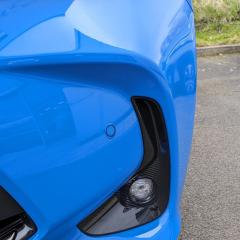Leaderboard
Popular Content
Showing content with the highest reputation on 01/03/2020 in all areas
-
I've been doing some experiments with Eco and Power mode. It seems like, that Eco mode does'nt assist accelerations every time, even if the battery is 60-70% charged. It takes a long time for the hybrid system (engine and battery) to get active, battery must be charged to at least 80%, before turning on. I think Eco mode is designed to go into EV mode every time possible, but outside the city with higher speeds, that does'nt happen much. Power mode assists every time I accelerate, unless battery power is 30%. Power mode does'nt use pure EV mode much, but keeps the engine running with 1000 rpm's. Power mode is waiting for the throttle to be pushed. It seems like Power mode uses a larger amount of the batterys capacity compared to Eco mode. Power mode cant be made a permanent setting, the car resets to Normal mode when beeing restarted. Eco mode can be made a permanent setting.3 points
-
This will be a long post I'm having fuel consumption issueI I'm 99% sure its because of the DPF. I used to get over 400 miles to a tank. Now i'm struggling to get 340/50 miles now.. I shouln't be getting 33/34 mpg on this car. I fitted a new 5th injector the other day in the hopes the original one was possibly leaking, causing the increased consumption and that it may not be able to get the DPF hot enough. I thought this because the lambda sensor reads a dip whilst driving along with a reduction on the MPG readout from 44mpg to 29 ish during this period. Tell tale of a DPF regen. When I manually carry out a DPF regen it never seemed to get hot enough as exhaust only stays around 500/550 Celsius. Now, looking at the image below. Looking at the second from the top graph you can see a jump towards the end. That's the ECU carrying out a DPF Regen to saying completed. Now straight after that, looking at the orange line in the middle. That's the lambda sensor. It's used for feedback during regeneration. As you can see, towards the end AFTER the ECU has completed the regeneration, it starts carrying out, another regeneration, or something..? See how the lambda sensor reading dips every so often. That's a tell tale sign the DPF is regenerating. Also note how the exhaust temperature stays really high. Looking at the second image is after I fitted the new 5th Injector. (genuine Denso etc). Before fitting the new injector the exhaust temperature wouldn't as high as it does now with the new one. You can see how it peaks at 671 degrees Celsius during regeneration, which is more than hot enough to burn off the soot, which burns at around 600 degrees. When I carried out a manual regeneration it would never get this hot. With the new injector it does now. So that's good! The Fuel Addition feedback value is also lower which is also better according to Toyotas documents (1.32 vs 1.45). I can't understand what the car is doing. I can easily achieve 38-41mpg in TOWN! where on the motorway, cruise set the 70mph I get 34/35mpg. Every-time I drive the car, the DPF starts doing a mild regeneration of sorts. Looking at the last image you can see a dip in the Lambda sensor every so often, and look how high the exhaust temperature is.. It shouldn't be this high whilst cruising and NOT carrying out a Regeneration.. Look on the left hand side for example.. The DPF soot and sulphur regen are BOTH on standby... The pressure sensor reads it as unblocked. On another data value, "DPF NO ACTIVATE" IS active. Meaning its not allowing it to regenerate yet it keeps squirting fuel into the exhaust to burn... something?! I'm going to try another ECU and see where that gets me.1 point
-
1 point
-
I got my 2016 Yaris Hybrid in late October 2019 and have driven it some 3,000 miles since. I also was a little bit disappointed when I did some calculations after the first tank stops. The previous owner used the car for commuting to work, the dealer said this guy drove the car exactly the same route every day. When I got it, the trip computer was not reset to zero, so obviously his average mileage was 5.1 liter per 100 km (55.4 mpg UK), calculated over thousands of miles. After my first tank refill I calculated my mileage at 5.7 liter per 100 km (49.6 mpg) which I found quite disappointing. My next tank refill gave me 5.2 liter (54.3 mpg). One one hand, this is a whooping 35 percent less than my previous car, a Citroen C3 Pluriel with SensoDrive gearbox and 1.6 liter 109 hp engine. On the other hand, this is about 50 percent more than the rating for the old NEDC test cycle. German automobile club ADAC has tested the car and has reported a combined mileage of 4.8 liter per 100 km (58.85 mpg), and I think that this is a reasonable figure for everyday use and for a driving style which cares for the environment without requiring unreasonable stunts (see: hypermiling, pulse and glide). Right now, I am monitoring the mileage of my car quite closely, and I got results ranging from 4.6 liter (61.4 mpg) up to 7.8 liter (36.2 mpg). The first, low fuel consumption was the result of approx. 25 miles in calm city traffic in Hamburg. The second, high consumption was rather high speed Autobahn chasing with speeds up to 105 mph and the cruise control set to values between 85 and 95 mph. From what I have found out myself and from what others tell me, there seem to be several factors which increase the fuel consumption: 1. cold starts in cold weather: When the car is cold, the engine will run on a high idle speed even if the car does not move. This is for warming up the catalytic converter and the engine coolant. When I got my best mileage figure, I had been on the Autobahn before, the engine was warm. Then I stopped at a petrol station, refilled my tank and reset the trip computer. Then the car went through heavy city traffic, but without having to heat up the engine. People who make a sport out of saving fuel, have another trick: When the engine is cold, they switch off the heating system entirely during the warm up period and rely on the heated seats instead;-) 2. Speeding: The recommended top speed on the German Autobahn is 130 kph (81 mph). I think this is pretty fast for a Yaris Hybrid driver on a fuel saving mission. If you are patient enough to stick with 110 kph (68 mph), your fuel consumption probably will drop by 25 percent. It seems to me that at high speeds the Yaris Hybrid is not more fuel efficient than other petrol powered cars of the same size. A Turbodiesel car may even do better. 3. Using cruise control: People who want to reduce their fuel consumption in a hybrid car should try to make use of the momentum of the car. It seems to save fuel when you accelerate the car firmly until the desired cruising speed, then let it coast a while, then accelerate again... Let the car roll when the road goes downhill and accelerate when it goes up again. And many Toyota Hybrid drivers say that the cruise control is not smart enough to do this. You can hear that. When you drive with cruise control, even slightly ascending roads immediately drive up the engine revs. This costs fuel. 4. Driving in wet conditions with winter tires. I expect a lower fuel consumption in the summer time. Right now, my personal fuel consumption is slightly higher than initially expected. But I think that it is unfair to judge a Hybrid car only on its fuel consumption. You may not forget that the Yaris features such nice goodies as a seamless transmission, an electric mode for silent operation and a bulletproof drivetrain without clutch, torque converter, alternator or starter. The last weeks I travelled Germany from south to north and back. I drove hours using the cruise control, and maybe I was turning the heating too high, because I like it warm. Maybe this cost me fuel worth 10 Euros. Okay, so be it;-) Best regards from Bavaria Frank1 point
-
No, when the engine is off there is no power for the cig lighter to use so no power drain from there. There is a power drain from somewhere leaving the battery dead. I'm not knowledgeable enough to help, someone more knowledgeable hopefully can help with finding the cause.1 point
-
Hi, Cyan Splash. I ordered a pan roof and gloss black wheels with beige interior. Sorry for the late reply - just started using the forum, and should have ticked the "notify me of replies" Fingers crossed it will arrive earlier for you - though you may prefer a 20 plate.1 point
-
As a fairly recently retired industrial control systems engineer, I just had so many issues with this - but I think you have summed it up very succinctly!1 point
-
There are cheaper ways to commit suicide that don't risk taking other people with you. And I say that as a 53 year old that has been programming computers for over 30 years.1 point
-
Ok, just had a chat with Toyota GB and my local (very knowledgeable seemingly) technician at my local dealer to try and get a definitive answer to this question. In the case of the Yaris Hybrid (and I'm sure probably all Toyota Hybrids), in addition to regenerative braking it also has EBD (Electronic Brake Distribution) meaning that the mechanical brake force on any given wheel at any given moment is totally variable controlled by the ECU and driving conditions at the time. So, I asked the question "after regenerative braking and thinking about the transition to the mechanical braking system, could you say that the subsequent further brake force is biased in any way between the front and rear axles?" and the answer was "No, it will be constantly variable across all 4 wheels whilst maintaining the car's balance". I hope this helps.1 point
-
I've done it to my car. 1.6 Valvematic originally 132BHP and 9.7 sec to 60mph (the brochure says it is 10sec but my gtech tested the acceleration and I got 9.7sec). I have installed a sport mufler (you can use for example made by MAGNAFLOW), then I changed the air filter to one made by PIPERCROSS. I did not check the power gain, I only got by those changes 9.6sec to 60mph. After that I installed the cold AIR intake made by K&N, but changed the cone filter to a one made of the same material as the pipercross filters. Those mods made my car get 141BHP and 9.45sec to 60mph. The cost of those modifications was around 300GBP (pounds) I also tried to add a piggyback computer to my ECU made by ECUMASTER. With all previous mods my car gained 157BHP and 9.3sec to 60mph. Unfortunately it was running on CHECK ENGINE all the time, this is why I sold the ECU MASTER.1 point
-
On that list forget plugs. They don't give power bonus so long as you keep them well maintained and gapped. With it being 2008 your about the changeover point of dual vvti/valvematic if it's valvematic forget camshaft changes. Very difficult to do. Supercharging is realistically easiest thing to do. Lotus have done it with the 1.8 dual vvti unit for the Elise.1 point
-
With it being naturally aspirated power gains are not cheap. Your obvious power gains are reduce weight dont carry whats not required. Power to weight ratio is the best performance gain. Lighter alloy wheels, remove air con, spare wheel. V Power fuel. Then its the usual Exhaust system, air filter, irdium spark plugs, bigger throttle body, camshafts, lighter pulleys etc list goes on. You will loose economy at the cost of performance, & have to declare the mods or insurance becomes void. Ideally if your serious change your car to save yourself the hassle.1 point









